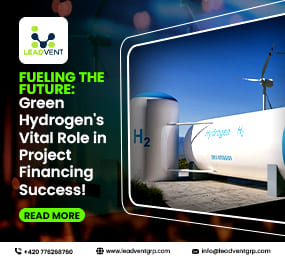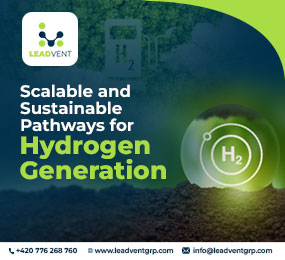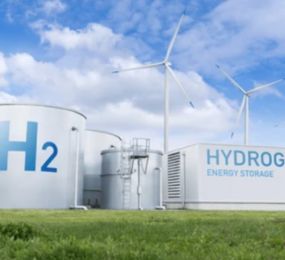Hydrogen has emerged as a promising alternative energy source due to its potential to reduce carbon emissions and reliance on fossil fuels. However, the challenges and opportunities associated with hydrogen storage and transportation are critical to its widespread adoption. This article explores these aspects, alongside insights from the upcoming Hydrogen Summit and World Hydrogen Summit, which will serve as pivotal platforms for discussing advancements in this field.
Understanding Hydrogen Storage Challenges
Low Volumetric Energy Density
One of the most significant challenges in hydrogen storage is its low volumetric energy density. Even in liquid form, hydrogen requires about four times the volume of gasoline to store an equivalent amount of energy. This characteristic complicates storage solutions, especially for mobile applications like vehicles where space is limited.
High Infrastructure Costs
The infrastructure required for hydrogen storage is expensive. Developing specialized tanks, cryogenic systems for liquid hydrogen, and safety systems involves substantial upfront investment. These costs can deter businesses from adopting hydrogen solutions despite the potential long-term benefits.
Safety Concerns
Safety is a paramount concern in hydrogen storage and transportation. Hydrogen is highly flammable, and leaks can pose serious risks. Ensuring that storage systems are designed with advanced safety features is crucial to mitigate these risks.
Current Storage Methods
- Compressed Gas Storage: This method involves storing hydrogen at high pressures (up to 700 bar) in reinforced tanks. While effective, it requires significant energy for compression and results in bulky units.
- Liquid Hydrogen Storage: Hydrogen can be cooled to -253°C to become liquid, which allows for higher density storage. However, maintaining such low temperatures presents engineering challenges and complexity.
- Emerging Technologies: Innovations such as metal hydrides and chemical carriers are being explored. Metal hydrides can store hydrogen within their crystal structures, releasing it upon heating, while chemical carriers bond hydrogen to other molecules for easier transport.
Opportunities in Hydrogen Storage
Market Growth Potential
The demand for hydrogen storage solutions is expected to grow significantly as more hydrogen-powered vehicles enter the market. Heavy-duty transport sectors are particularly interested in developing hydrogen fuel cells for long-haul trucks and buses5. According to recent statistics, the global hydrogen market could reach $183 billion by 2025, driven by advancements in storage technologies.
Integration with Renewable Energy
Hydrogen storage presents a unique opportunity to balance renewable energy grids. Excess energy generated from solar or wind sources can be converted into hydrogen through electrolysis, effectively storing energy for later use when production dips. This integration could enhance the reliability of renewable energy sources.
Government Initiatives
Various government initiatives are promoting hydrogen infrastructure development. For instance, the U.S. Department of Energy's Hydrogen Shot program aims to reduce clean hydrogen production costs by 80% over the next decade. Such initiatives create an environment conducive to technological advancements in storage solutions.
Case Studies Highlighting Innovations
Case Study 1: The Suiso Frontier
The Suiso Frontier is recognized as the world's first liquefied hydrogen carrier. It successfully transported liquid hydrogen from Australia to Japan, demonstrating the feasibility of large-scale liquid hydrogen transport. However, it also highlighted challenges related to cryogenic storage and safety during transportation.
Case Study 2: California's Hydrogen Infrastructure
California has invested heavily in developing a comprehensive hydrogen infrastructure that includes refueling stations for fuel-cell vehicles. The state has over 50 operational stations and aims to expand this network further, showcasing how strategic investments can facilitate hydrogen adoption.
Insights from the Hydrogen Summit and World Hydrogen Summit
The upcoming Hydrogen Summit and World Hydrogen Summit will serve as crucial forums for discussing these challenges and opportunities. These events will gather industry leaders, policymakers, and researchers to share insights on:
- Innovative Storage Solutions: Presentations on cutting-edge technologies that address current limitations.
- Safety Protocols: Discussions on best practices for ensuring safe handling and transportation of hydrogen.
- Market Trends: Analysis of emerging trends in the hydrogen market and investment opportunities.
These summits are expected to foster collaborations that could accelerate advancements in hydrogen technology.
Frequently Asked Questions (FAQs)
Q1: What are the primary methods of hydrogen storage?
A1: The primary methods include compressed gas storage, liquid hydrogen storage, metal hydrides, and chemical carriers.
Q2: What safety measures are necessary for transporting hydrogen?
A2: Safety measures include using high-strength materials for tanks, implementing leak detection systems, and following strict handling protocols.
Q3: How does government policy impact hydrogen infrastructure?
A3: Government policies can provide funding, set regulations, and create incentives that encourage investment in hydrogen technologies.
In conclusion, while challenges persist in the realm of hydrogen storage and transportation, numerous opportunities exist that could pave the way for a sustainable future powered by this clean energy source. The discussions at events like the Hydrogen Summit and World Hydrogen Summit will be instrumental in shaping strategies that address these challenges head-on while leveraging emerging technologies for a greener tomorrow.
















